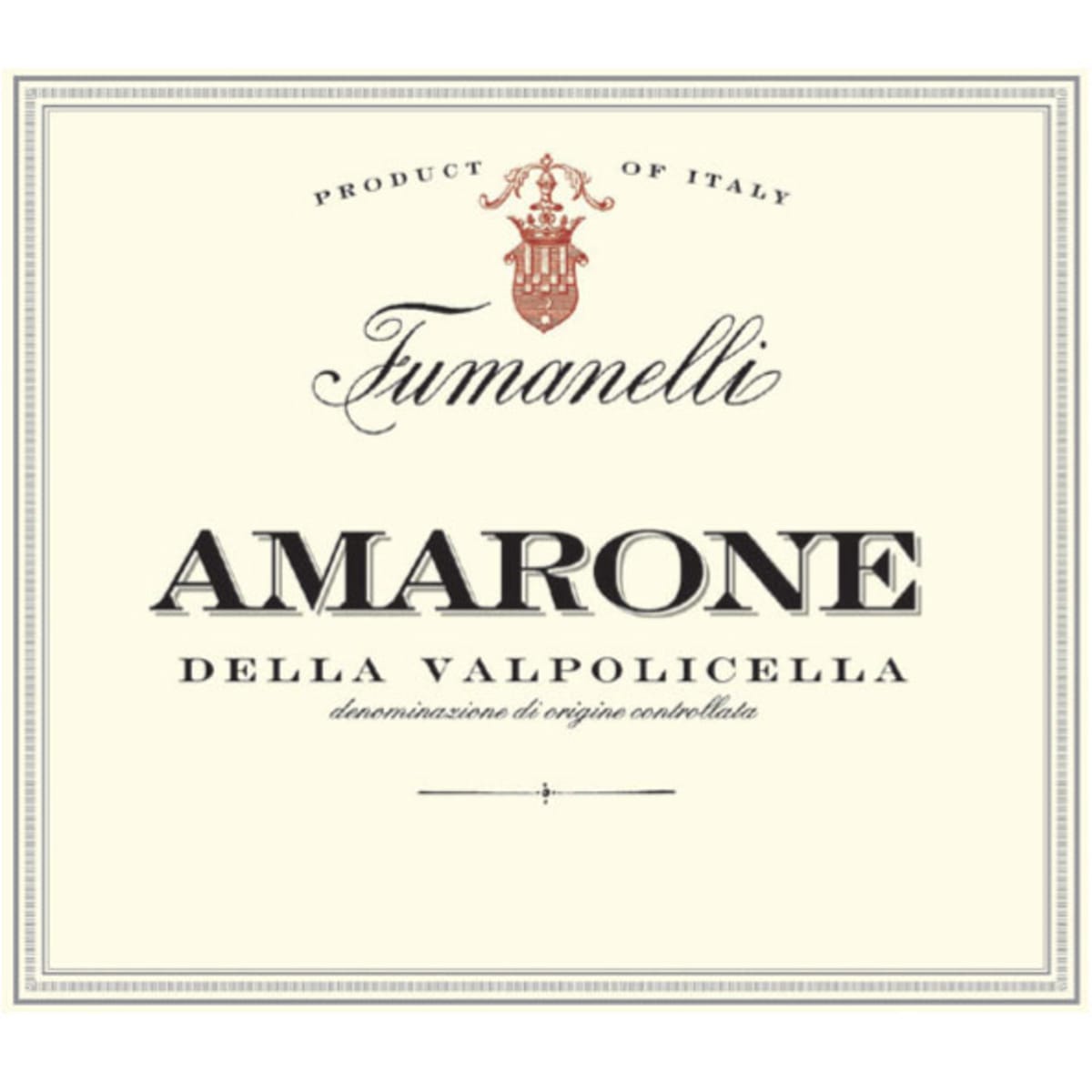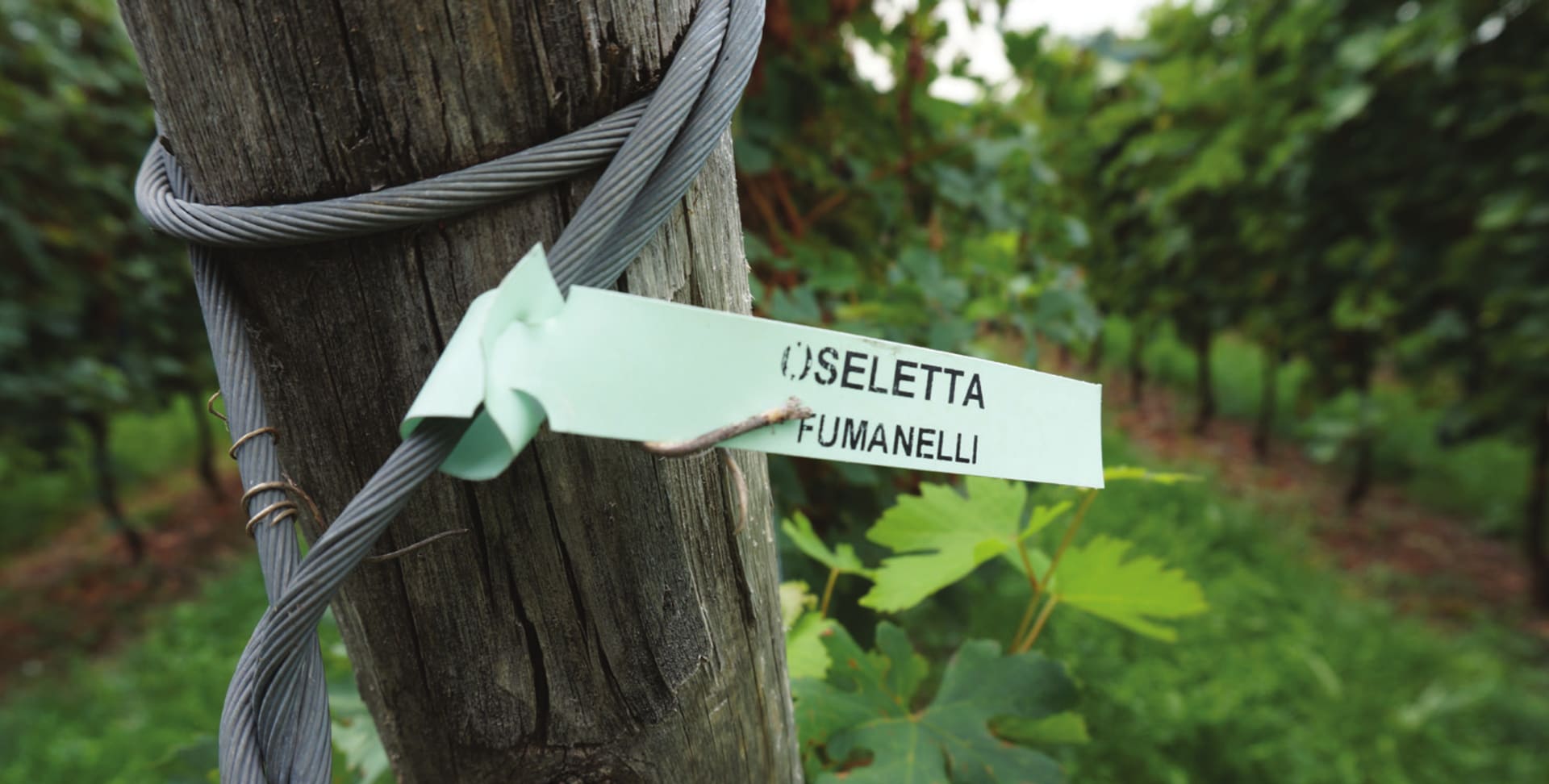Marchesi Fumanelli Amarone della Valpolicella 2008


Product Details
Your Rating
Somm Note
Winemaker Notes
Blend: 40% Corvina, 40% Corvinone, 20% Rondinella.
Other Vintages
2011-
Wine
Enthusiast
-
Wine
Enthusiast -
Wine
Spectator






Fumanelli is one of the region’s largest and most historic family owned wineries, having 78 acres of exclusively estate grown fruit, within the walls of their ancient property, eight miles from Verona. As Amarone specialists, they deftly combine traditional and modern techniques to produce authentic expressions of their distinctive terroir. The Marchesi Fumanelli family have been cultivating grapes and producing prestigious wines in Valpolicella since 1470. The Squarano estate is located in the heart of Valpolicella, on a gentle hilltop surrounded by vineyards, cherry and cypress trees. Built in the seventeenth century by the noble Fumanelli family, one can still admire the inscriptions and archaeological remains to be seen on the grounds of the villa, including the vestiges of a temple dedicated to the Goddess Flora, built by the Romans who planted the first vines over a thousand years ago. Since 1998 the ancient cellars, after careful restoration, host once again the oak barrels for the aging of the classical Valpolicella wines. The barrel fragrances evoke the scents of the local hills of cypresses and cherries, having the colors, traditions and culture of the territory.
Marchesi Fumanelli is a family owned and managed winery currently managed by Armando Fumanelli. In his role as Proprietor and CEO of Marchesi Fumanelli, Armando leads his experienced team with the goal of deftly combining traditional and modern techniques to produce authentic expression of their distinctive terroir. Prior to joining Marchesi Fumanelli in 1998, Armando completed a Political Sceince degree in Switzerland and subsequently spent several years working for the Italian Embassy in several East African and Middle Eastern countries. Since joining his historic family winery, Armando has overseen the restructuring and replanting of the wine cellars and vineyards to bring the Squarano Estate back to its splendor and glamour of past centuries. Marchesi Fumanelli wines are the reference point for Pedigree and Provenance in the heart of Valpolicella.

With hundreds of red grape varieties to choose from, winemakers have the freedom to create a virtually endless assortment of blended red wines. In many European regions, strict laws are in place determining the set of varieties that may be used, but in the New World, experimentation is permitted and encouraged resulting in a wide variety of red wine styles. Blending can be utilized to enhance balance or create complexity, lending different layers of flavors and aromas. For example, a red wine blend variety that creates a fruity and full-bodied wine would do well combined with one that is naturally high in acidity and tannins. Sometimes small amounts of a particular variety are added to boost color or aromatics. Blending can take place before or after fermentation, with the latter, more popular option giving more control to the winemaker over the final qualities of the wine.
How to Serve Red Wine
A common piece of advice is to serve red wine at “room temperature,” but this suggestion is imprecise. After all, room temperature in January is likely to be quite different than in August, even considering the possible effect of central heating and air conditioning systems. The proper temperature to aim for is 55° F to 60° F for lighter-bodied reds and 60° F to 65° F for fuller-bodied wines.
How Long Does Red Wine Last?
Once opened and re-corked, a bottle stored in a cool, dark environment (like your fridge) will stay fresh and nicely drinkable for a day or two. There are products available that can extend that period by a couple of days. As for unopened bottles, optimal storage means keeping them on their sides in a moderately humid environment at about 57° F. Red wines stored in this manner will stay good – and possibly improve – for anywhere from one year to multiple decades. Assessing how long to hold on to a bottle is a complicated science. If you are planning long-term storage of your reds, seek the advice of a wine professional.

Among the ranks of Italy’s quintessential red wines, Valpolicella literally translates to the “valley of cellars” and is composed of a series of valleys (named Fumane, Marano and Negrare) that start in the pre-alpine Lissini Mountains and end in the southern plains of the Veneto. Here vineyards adorn the valley hillsides, rising up to just over 1,300 feet.
The classification of its red wines makes this appellation unique. Whereas most Italian regions claim the wines from one or two grapes as superior, or specific vineyards or communes most admirable, Valpolicella ranks the caliber of its red wines based on delimited production methods, and every tier uses the same basic blending grapes.
Corvina holds the most esteem among varieties here and provides the backbone of the best reds of Valpolicella. Also typical in the blends, in lesser quantities, are Rondinella, Molinara, Oseleta, Croatina, Corvinone and a few other minor red varieties.
Valpolicella Classico, the simplest category, is where the region’s top values are found and resembles in style light and fruity Beaujolais. The next tier of reds, called Valpolicella Superiore, represents a darker and more serious and concentrated expression of Valpolicella, capable of pairing with red meat, roast poultry and hard cheeses.
Most prestigious in Valpolicella are the dry red, Amarone della Valpolicella, and its sweet counterpart, Recioto della Valpolicella. Both are created from harvested grapes left to dry for three to five months before going to press, resulting in intensely rich, lush, cerebral and cellar-worthy wines.
Falling in between Valpolicella Superiore and Amarone is a style called Valpolicella Ripasso, which has become immensely popular only since the turn of the century. Ripasso literally means “repassed” and is made by macerating fresh Valpolicella on the pressed grape skins of Amarone. As a result, a Ripasso will have more depth and complexity compared to a regular Superiore but is more approachable than an Amarone.
